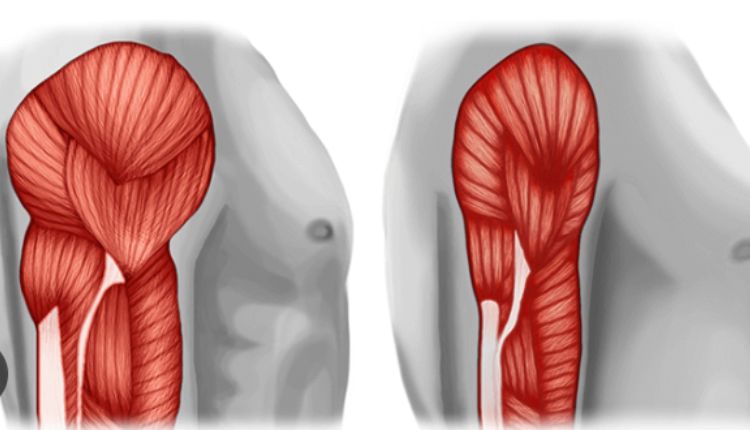Skeletal muscle atrophy during periods of disuse is associated with the amplification of catabolic signaling and reduced anabolic response. However, recent studies suggest that elderly muscles are resistant to the normal anabolic responses induced by resistance exercise and amino acid ingestion. It seems that resistance to protein anabolism is partly due to the fact that basal rates of skeletal muscle protein synthesis are unchanged with advancing healthy age. This resistance can be overcome with the addition of a protein-rich meal.
What Is Anabolic Resistance?
Anabolic resistance occurs when your body is less responsive to common anabolic stimuli that are used for muscle building. This includes exercise and protein ingestion. Anabolic resistance can lead to a reduction in the amount of muscle you have and can make it difficult to get the physique that you want. The good news is that anabolic resistance can be reversed with a combination of exercise and protein ingestion. In fact, research has shown that high-intensity low-volume resistance training combined with protein ingestion can stimulate a muscle protein synthesis response similar to that of young adults.
Consuming isolated protein (such as whey) also stimulates MPS, increasing your amino acid pool to use in building new muscle cells. This is especially true when taken immediately before and after a workout. Interestingly, BCAA and leucine supplements may be able to reverse anabolic resistance by activating motor signaling, which is responsible for regulating protein synthesis. (10)
How Does Anabolic Resistance Affect Muscle Building?
While a well-balanced diet of protein, carbohydrates, and fat is essential for healthy individuals, muscle building is primarily dependent upon the net positive balance between muscle protein synthesis rates and rates of muscle protein breakdown. Unfortunately, resistance exercise has been shown to elicit a minimal increase in skeletal muscle protein synthesis in young people and older adults. This chronic inability to stimulate skeletal muscle protein anabolism in the elderly may be one of the primary contributing factors to sarcopenia.
Fortunately, consuming protein and amino acids stimulates muscle protein synthesis, which can help preserve muscle mass and strength with resistance training. Moreover, research has shown that a single meal can provide an anabolic stimulus for muscle growth, especially if consumed within 2 h after resistance exercise. Therefore, a simple strategy to improve the ability to retain and build muscle is to consume crystalline proteins and amino acid supplements within 2 h after resistance exercise. Routine aerobic exercise also promotes favorable adaptations to insulin sensitivity and mitochondrial function, which can also enhance protein synthesis after resistance training.
What Causes Anabolic Resistance?
As we age, our bodies undergo many changes that can impact muscle building. Besides the well-known effects such as reduced energy and a slowed metabolism, there are other factors that can negatively influence our ability to build muscle. One of these is anabolic resistance, which results in a blunted stimulation of muscle protein synthesis rates when ingesting proteins and/or exercising. Numerous studies have shown that consuming protein/amino acids following resistance exercise enhances net muscle protein synthesis in the muscle. This effect is dependent on several physiological processes including protein digestion, absorption, splanchnic amino acid sequestration, and the activity of anabolic signaling proteins.
However, the acute alterations in MPS observed in elderly muscles following resistance training are less robust than those observed in young people. This is due to a number of physiological processes including reduced protein digestion and absorption, decreased anabolic signaling, diminished muscle perfusion, and reduced cellular signaling responses (e.g. nitric oxide synthase). Routine aerobic exercise has been shown to improve these physiological responses, potentially reducing anabolic resistance and increasing MPS in older muscles.
How Can I Avoid Anabolic Resistance?
Typically, healthy individuals who consume sufficient protein and partake in resistance exercise will maintain their skeletal muscle mass. This occurs because there is a positive balance between muscle protein synthesis rates and muscle protein breakdown rates. However, as we age, our bodies become less responsive to these anabolic stimuli, leading to a decreased ability to build muscle mass. This is caused by a variety of factors including reduced levels of cellular signaling, decrements in muscle blood flow, and changes in hormones such as insulin and glucagon. The latter is responsible for regulating vascular tone and facilitating the transport of nutrients into skeletal muscle cells.
Studies have shown that supplementing with branched-chain amino acids (BCAA) and leucine can help to desensitize muscle protein to anabolic stimuli. For example, consuming BCAA and leucine pre- and post-resistance training can result in greater levels of phosphorylated 4E-BP1 and the activation of the motor compared to control groups. Similarly, adding n-3 polyunsaturated fatty acids to a high-protein diet can increase the sensitivity of muscle to anabolic stimulation.
Conclusion
Muscle anabolic resistance is one of the major reasons why it’s harder to build muscle after age 50. Anabolic resistance occurs when your skeletal muscles become less sensitive to exercise and nutrient stimuli that promote protein synthesis. Research suggests that consuming protein (and/or amino acids) in close temporal proximity to resistance exercise can overcome anabolic resistance and support greater muscle mass building.
